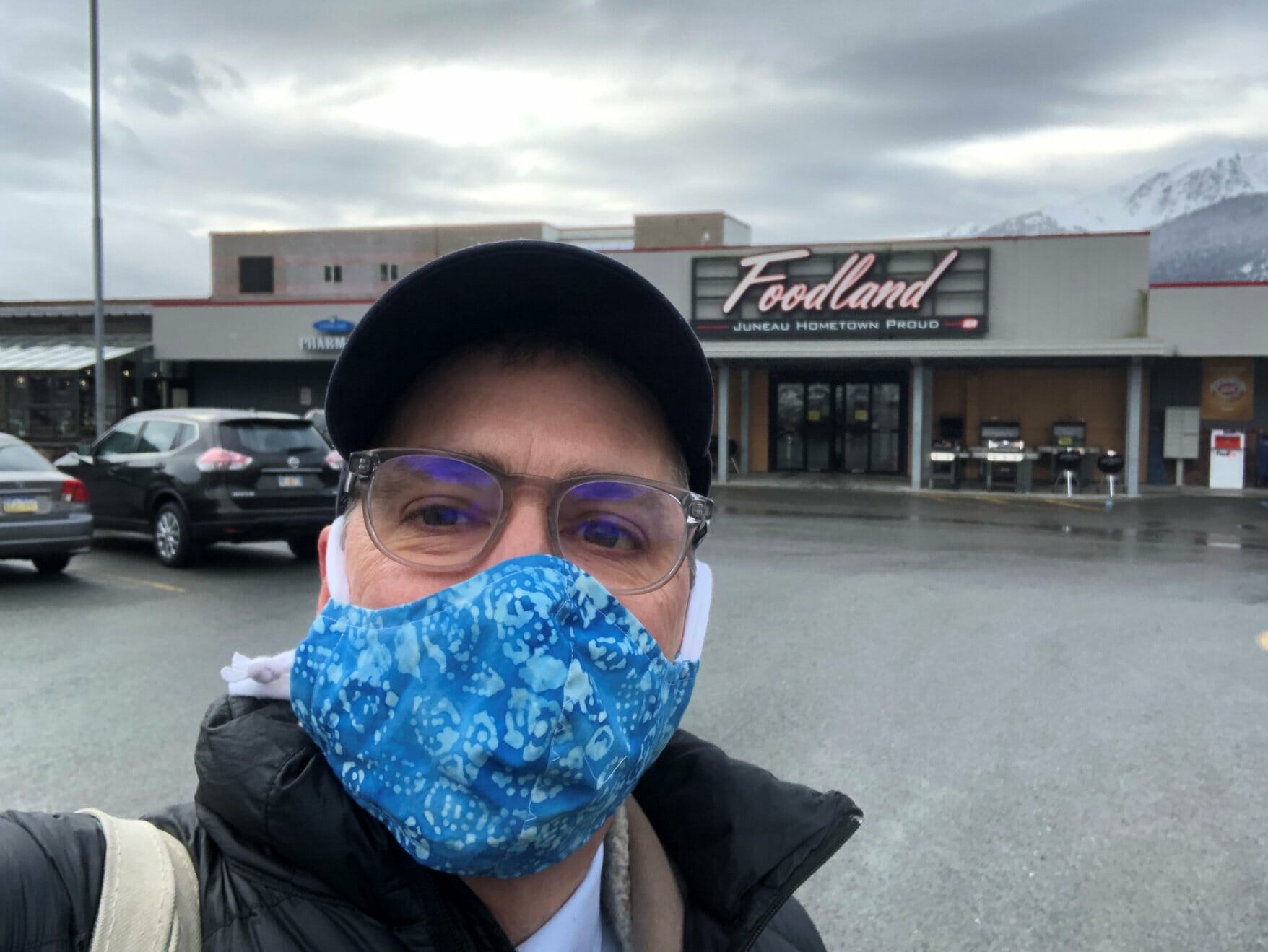
Wear a cloth face covering to slow the spread of COVID-19
Wear a cloth face covering that covers both the nose and mouth in public settings where social distancing measures are difficult to maintain, like at grocery stores and pharmacies, as recommended by State of Alaska and CDC. This is to protect people around you if you are infected but are not showing symptoms. A cloth face covering is not intended to protect the wearer, but may prevent the spread of the virus from the wearer to others. The primary ways to slow the spread of COVID-19 continue to be social distancing, frequent hand-washing, and disinfecting high-touch surfaces. Wearing a face covering outside of your household is another tool.
A cloth face covering is a material that covers the nose and mouth. It can be secured to the head with ties or straps or simply wrapped around the lower face. It can be made of a variety of materials, such as cotton, silk, or linen. A cloth face covering may be factory-made or sewn by hand, or can be improvised from household items such as scarfs, T-shirts, sweatshirts, or towels. Learn how to make your own mask at home without a sewing machine here. CDC also offers sew and no sew options.
Avoid removing face coverings until you’ve returned home. When taking off the covering, avoid touching the front of the face covering as it may be contaminated, and instead remove it by grasping the ear loops, ties, or bands. Immediately discard or place the mask in a designated container for laundering. Wash your hands immediately after removing the face covering and before touching anything else. When washing face coverings, do so in hot, soapy water between every use.
Do not wear N-95 or surgical masks, as these are needed by health care workers and first responders. Cloth face coverings should not be placed on children younger than 2 years of age, anyone who has trouble breathing, or anyone that is unconscious, incapacitated or otherwise unable to remove the cover without assistance.
Remember, do not rely on face coverings as the primary way to prevent COVID-19 transmission, and be careful to avoid developing a false sense of security through the use of face coverings. Continue to stay home, social distance if you must go out, wash your hands, and avoid touching your face.
